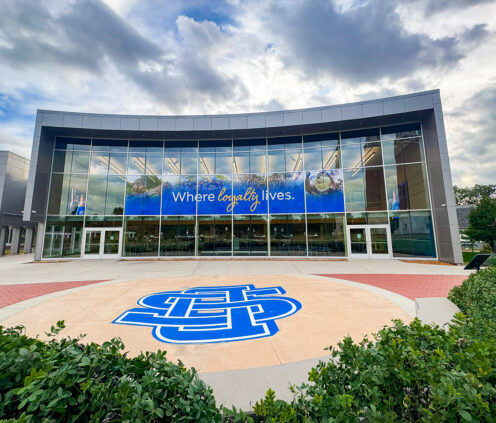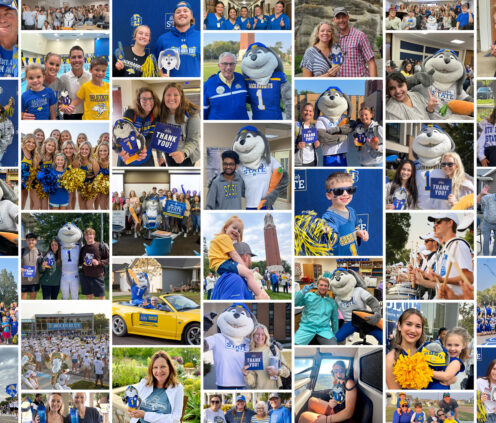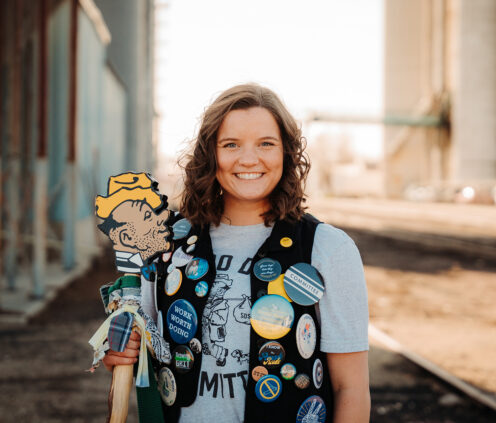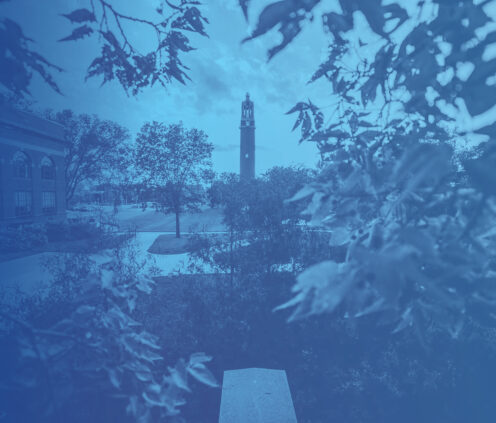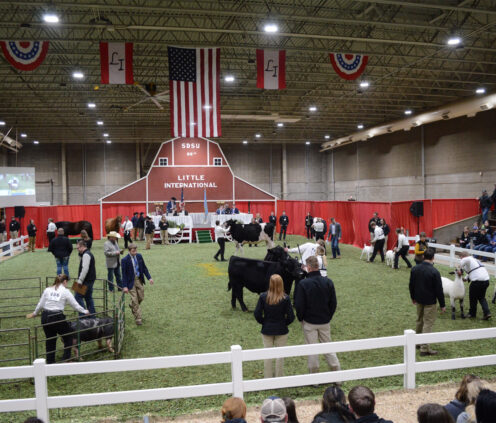Oakwood Empowers Jackrabbit Talent to Find Their Voice
For nearly 50 years, SDSU’s literature and arts journal has spotlighted creative projects across campus and across the Midwest.
Jackrabbits have a bold story to tell, and Oakwood magazine is just the place to share it.
Established in 1975, SDSU’s annual literature and arts journal began when former student Doug Cockrell and English professor David Evans decided to collaborate on a medium that could spotlight the work of both students and regional writers. In its earlier decades, Oakwood was primarily a student literary magazine, edited by Jackrabbits and led by their faculty advisors. As of the 2017 issue, Oakwood began transitioning back to its roots, accepting work from writers and artists at all stages of their careers throughout the region.
Oakwood offers both writers and artists alike the chance to tap into their creative talents and find their voice. In addition to literary work, the journal is supplemented with original artwork, shining a light on projects dreamed up by artists throughout the Midwest.

Oakwood isn’t just about the finished product. As a magazine created and edited by students, graduates and undergrads can enroll in a publishing practicum to produce the journal from start to finish for scholarly credit. That editorial staff is supervised by associate professor Steven Wingate, who’s been at the helm of the publication for the past decade. We sat down with him to discuss the ins and outs of making a magazine, as well as where the publication is headed in the future.
How does being published in Oakwood or serving on the editorial staff prepare writers and artists for their future careers?
"Getting your work published makes you want to publish more, and
it all has to start somewhere. For a lot of SDSU students and alumni over the
decades, Oakwood has been where they debuted. It can be a tremendous confidence
booster for people at the early stages of their writing lives to get published,
and we are committed to staying the kind of magazine that’s open to first
publications. And for those who want to become writers, it’s incredibly
valuable to experience the machinery of the publication process. If you’ve done
it yourself, you’ll know what your editors and publishers are going through.
More and more, we’ve been publishing writers with multiple books
to their names. In recent issues, we’ve published Kent Meyers, Linda
Hasselstrom, Patrick Hicks, and Terese Svoboda—all writers either living in or
originally from this region with tremendous writing track records. Through
this, Oakwood is becoming the kind of journal where writers at all levels of
their careers would be happy to get published."
What sort of skills do students gain in producing a literary magazine?
"Number one is planning, and number two is collaboration. Working on a magazine like Oakwood is an excellent preparation for any work that involves the dissemination of information. You learn to manage how to produce information, which isn’t as easy as it sounds because it needs to be gathered, assessed, verified, arranged, and coherently sent out into the world. All of these things require strategies and logistics involving multiple people and multiple timelines. It takes a special set of skills to group up with people and condense the chaos of the world into something that others can grasp, and those are the skills working on Oakwood develops."
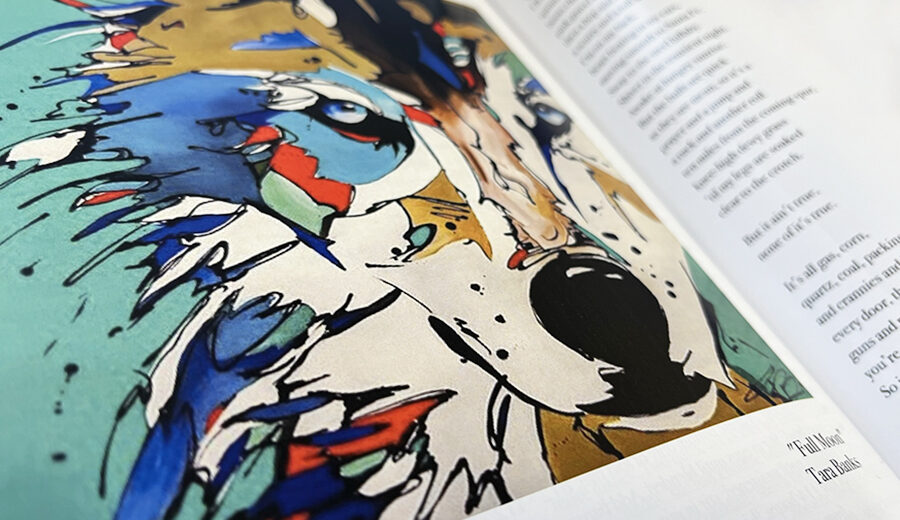
What’s a fun fact about Oakwood that Jackrabbit readers may not know?
"Our very first issue in 1975 featured work from Ted Kooser of Nebraska, who went on to serve two terms as United States Poet Laureate (2004 through 2006). Our next issue of Oakwood will also include new work from him."
What future goals and milestones lay ahead for Oakwood?
"Over the past few years, I’d been steering Oakwood toward what it was originally intended to be: a journal that reflected the creative spirit of the region. For a while, we focused heavily on student work, and though we’re still committed to publishing students, focusing exclusively on it limited our options for truly representing the region. Now, we accept submissions from writers and artists with a connection to South Dakota or any of the states adjoining it. That may be a current connection or a historical one—as in the case of authors who grew up here but have since moved away.
We are committed to print and create a beautiful journal each spring, but as time goes on, we will shift more energy into digital. It’s the way most magazines are going because it’s more easily spreadable. As long as I’m here, I’d like to see Oakwood straddle the print and digital and enjoy the best of both worlds.
Another project we’ve done in collaboration with Briggs Library and its Open Prairie archive is to digitally preserve all of the journal’s history. Every issue since the beginning is available at Open Prairie. We are a piece of Great Plains literary history, and now people can find us easily."

_
Since its inception, the magazine has provided an opportunity for students across all areas of study at SDSU to unite in one unique publication, comprising passion projects from students of all majors, as well as writers and artists of the Great Plains.
As Wingate himself pointed out, the magazine is nearing the impressive milestone of fifty years of publication, which is no small feat for a journal that has never had a significant budget or full-time staff. As that landmark dawns, the makers of Oakwood are looking to start the next chapter and broaden audiences for both print and online mediums.
Through its ongoing transformation from a student-only publication to one that encompasses regional writers at all stages of their careers, Oakwood is building a readership and reputation that far exceeds SDSU.

